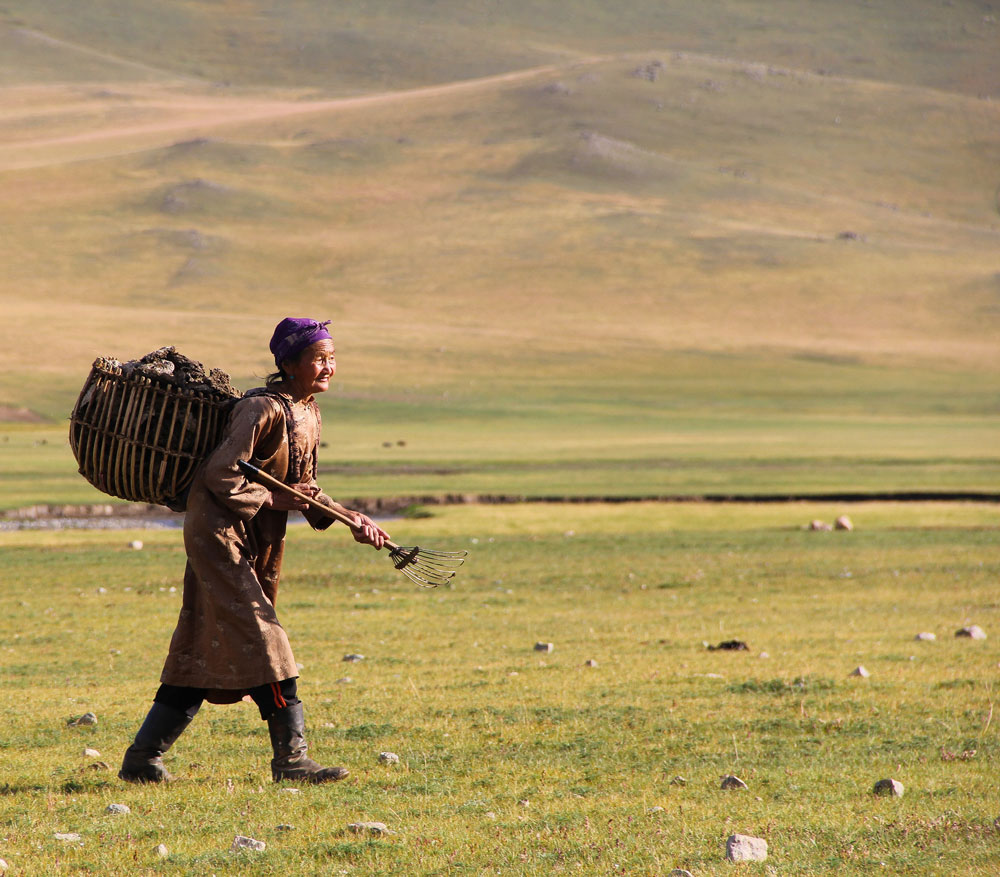
(+976) 11-354662
| info@tourmongolia.com | sales@tourmongolia.com

Mongolian NOMADIC life is based on the herding of five types (five snouts) of animals: cattle (including yaks), sheep, goats, camels, and horses. The products obtained from these animals satisfy nearly all of the Mongolian family’s basic needs: beef, mutton, and goat meat, supplemented by a wide variety of dairy products, constitute the Mongolian diet; sheep wool processed into felt, is used to make clothing, bedding, and insulation for the Ger (yurt); horses, camels, and yaks provide transportation and animal hair and bones are even used to produce musical instruments and children’s toys.
The domestication of animals and emergence of the nomadic lifestyle developed relatively late in Asian history, long after agricultural techniques had become established. In many respects nomadic herding is a more complex activity than agriculture, for it requires the ability to domesticate animals, control their feeding and reproduction, and develop techniques for the use of domestic animal products for food, clothing and shelter. Nomadism also demands a precise understanding of natural cycles and the suitability of different areas for pasturage for each type of herd.
The horse is the most important of the five animals. It is the perfect means of the transport for the terrain. It is said that children are taught to ride before walking. To catch the horse, Mongols use polo-lasso called “uurga” consisting in a rope loop at the end of a very long pole. Mares are milked and fermented milk is the Mongolians’ favourite drink ‘”the airag” which can then be distilled in an alcohol, “arhi”, the typical Mongolian vodka. Airag is offered as a ritual to the visitors.
The camel they breed is the Bactrian camel, a two-humped camel able to endure the extremes of cold and hot. The camel as well as the yak is used as beasts of burden specially to transport the dismantled Ger from place to place.
Nomadic movements of Mongol herders are not conducted randomly, but according to precisely-defined traditions. Mongolian nomadic families move their animals into a different general area of pasturage for each of the four seasons, referred to as uvuljuu (winter pasturage), khavarjaa (spring pasturage), zuslan (summer pasturage), and namavjaa (autumn pasturage).
During winter and spring the herds are generally kept in a fixed location to conserve their strength, but in summer and autumn the family will move the herds several limes within the larger area of pasturage, so as to give the animals more of a chance to fatten by grazing on fresh vegetation.
In the warmer months the herding family leaves behind many of its possessions travelling in a smaller and tighter Ger (yurt) with minimal furniture. In forested-steppe regions, where precipitation is more abundant, families move between six and eight times a year, over an average distance of 15-20 kilometers; in mountainous and dry steppe regions families move farther and more frequently, travelling as far as 150 kilometers in a single move.
Nomadic patterns in the Gobi are more directly influenced by weather and the location of springs; drought or extreme snowfall can force families to move great distances in search of adequate water and pasturage.
For the winter pasturage a sheltered area is chosen, and animals are kept in a roofed enclosure with an insulating bed of dried animal dung. In the spring, as the animals are at their weakest, the family moves to a pasturage which both has early vegetation and is free of rocky, boggy, or slippery areas that might tax the animals’ strength. The herding family moves most frequently in the summer months, bringing the herds to open areas with abundant vegetation. In autumn, as the animals must fatten in preparation for the winter, the animals arc taken to a quiet location-far from roads or settlements-where they can graze in peace.
Usual daily activities of nomads are all to do with herding their livestock and processing its raw material to convert them into food, clothing and shelters, such as feeding animals, training horses, cutting sheep wool, brushing cashmere, making felts and milking animals as well as producing dairy products.

